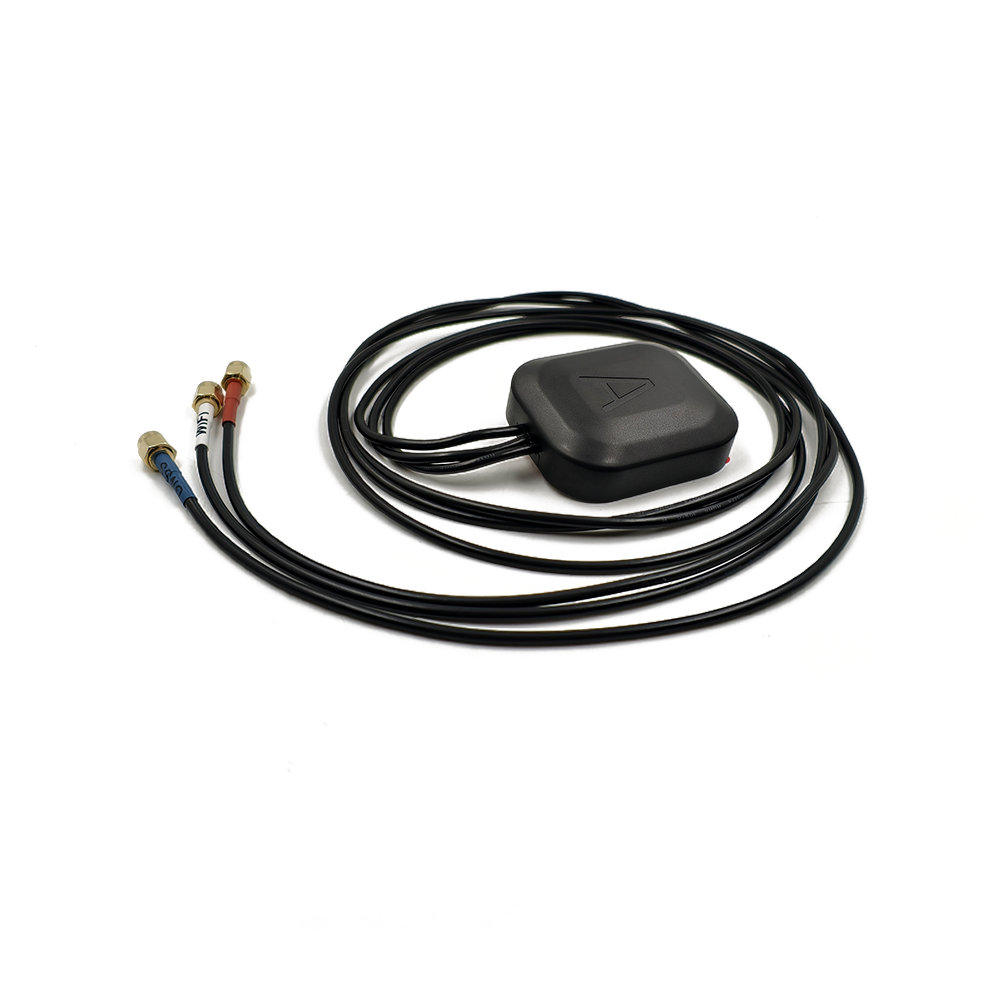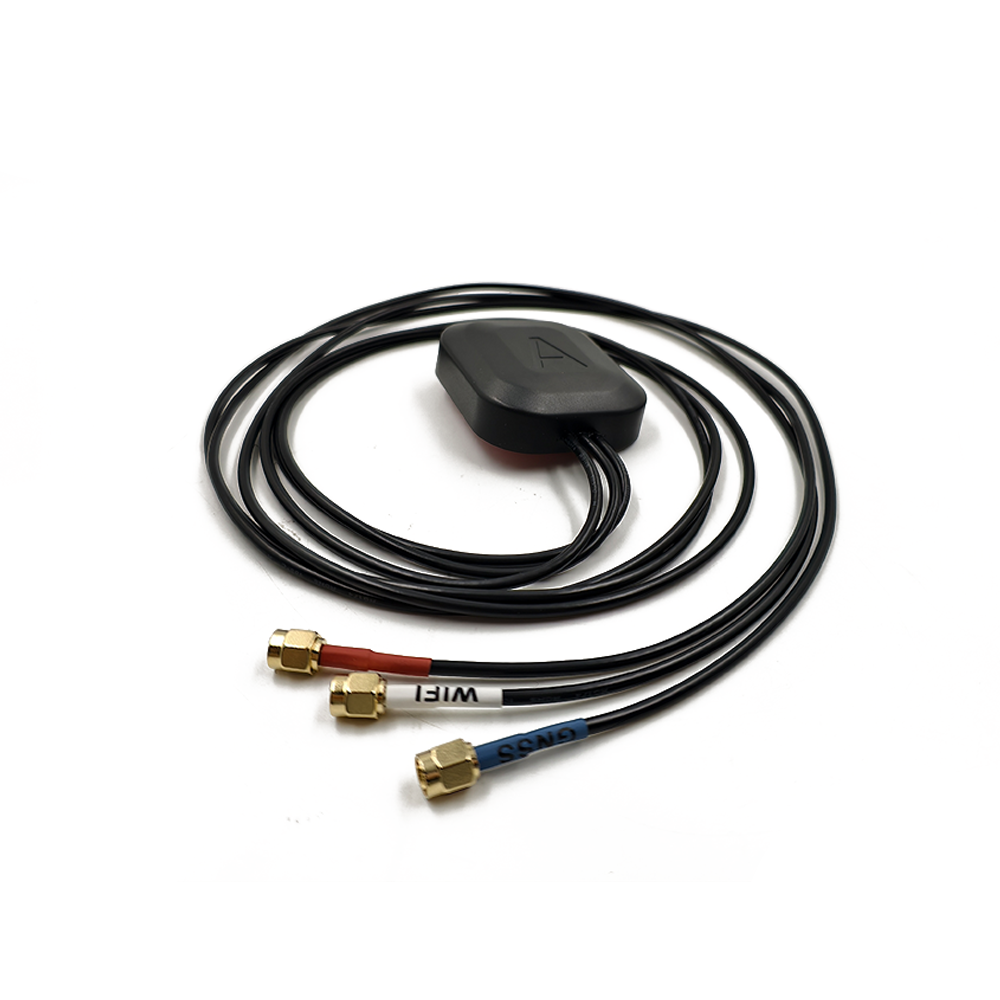At its core, RTK technology relies on the comparison of satellite signals received by a rover antenna (mounted on the target device) and a base station antenna (fixed at a known location). By calculating the difference in signal arrival times between the two, RTK systems correct for atmospheric interference, satellite clock errors, and other sources of inaccuracy, delivering real-time positioning data with unprecedented precision. The High Gain RTK Antenna amplifies this process by capturing weak satellite signals with exceptional efficiency, ensuring that even faint carrier-phase information—critical for RTK calculations—is preserved and processed.
Central to this capability is the antenna’s high gain, typically ranging from 25 to 35 dBi (decibels relative to an isotropic radiator). Gain measures the antenna’s ability to focus signal energy toward satellites, a critical advantage in environments where signals are attenuated by obstacles like buildings, foliage, or atmospheric conditions. For example, in dense forests or urban canyons, a high-gain RTK antenna can amplify signals from low-elevation satellites that would otherwise be undetectable by standard antennas, maintaining centimeter-level accuracy where conventional GNSS would fail. This gain is achieved through a combination of directional design (focusing energy in upward angles) and integrated low-noise amplifiers (LNAs), which boost signal strength without introducing excessive noise.
Technical Specifications: Precision Engineering
A High Gain RTK Antenna’s performance is defined by a suite of specifications that ensure reliability and accuracy:
Frequency Range: RTK antennas typically operate across multiple GNSS bands, including GPS L1/L2/L5, GLONASS G1/G2, BeiDou B1/B2/B3, and Galileo E1/E5. This multi-band support allows the antenna to leverage signals from multiple satellite constellations, reducing reliance on a single system and enhancing redundancy. For example, if GPS L1 signals are disrupted by solar flares, the antenna can switch to BeiDou B2 or Galileo E5, ensuring continuous RTK functionality.
Polarization: Most RTK antennas use right-hand circular polarization (RHCP), matching the polarization of GNSS satellite signals. This minimizes signal loss caused by reflections off the ground or man-made structures, a common issue in RTK applications where even minor interference can introduce errors. RHCP ensures that reflected signals (which often become left-hand polarized) are rejected, preserving the integrity of the direct signal used for positioning.
VSWR (Voltage Standing Wave Ratio): A VSWR of ≤2.0 is standard for RTK antennas, indicating efficient signal transfer between the antenna and the connected receiver. VSWR measures the ratio of reflected to transmitted signal power; a value of 2.0 means over 90% of the signal is utilized, with minimal loss. This efficiency is critical for maintaining the weak carrier-phase signals needed for RTK corrections.
Impedance: 50 ohms, the industry standard for RF systems, ensures seamless integration with RTK receivers and base stations, maximizing power transfer and reducing signal reflections.
Noise Figure: RTK antennas often include LNAs with a noise figure of ≤1.5 dB, a measure of how much noise the amplifier introduces into the signal. A low noise figure ensures that weak satellite signals are amplified without corruption, preserving the precision required for RTK calculations.
High Gain RTK Antennas are engineered to withstand the harshest conditions, from desert heat to arctic cold, making them indispensable for field operations:
Housing Materials: Antennas are typically encased in rugged materials like UV-resistant ABS plastic, aluminum, or fiberglass, protecting internal components from moisture, dust, and physical impact. This durability is critical for applications like construction, where antennas are exposed to debris, vibrations, and extreme temperatures.
Weather Resistance: Most RTK antennas carry an IP67 or IP68 rating, ensuring waterproof and dustproof performance. This allows them to operate in heavy rain, snow, or high humidity without degradation—essential for agricultural use, where equipment is deployed year-round.
Mounting Options: Versatile mounting systems (e.g., magnetic bases, pole mounts, or flange brackets) allow secure installation on vehicles, drones, or fixed structures. For example, a drone used for land surveying can mount the antenna via a lightweight pole, while a tractor in precision agriculture might use a magnetic base for quick attachment.
Applications: Transforming Industries with Precision
The High Gain RTK Antenna’s ability to deliver centimeter-level accuracy has revolutionized numerous fields:
Precision Agriculture: Farmers use RTK-equipped tractors and harvesters to plant, fertilize, and harvest crops with sub-meter precision. By following RTK-guided paths, equipment minimizes overlap, reducing input costs (e.g., seeds, fuel) and maximizing yields. For example, a corn farmer can plant rows 20 cm apart with consistent spacing, optimizing sunlight exposure and nutrient uptake.
Construction and Surveying: Land surveyors rely on RTK antennas to map terrain, stake out construction sites, and verify structural alignment. The antenna’s high gain ensures accurate measurements even in urban areas, where tall buildings would otherwise block satellite signals. Construction crews use RTK to align foundations, walls, and utilities with millimeter precision, reducing rework and ensuring compliance with design specifications.
Autonomous Vehicles: Self-driving cars, drones, and robots use RTK for navigation in dynamic environments. A delivery drone, for instance, can land on a rooftop with centimeter accuracy using RTK, avoiding obstacles and ensuring safe operation. Autonomous tractors in mining operations rely on RTK to navigate narrow paths between stockpiles, preventing collisions and optimizing material transport.
Geospatial Mapping: Cartographers and environmental scientists use RTK antennas to create detailed 3D maps of landscapes, coastlines, and ecosystems. The high gain allows mapping in remote areas, such as rainforests or mountain ranges, where standard GNSS would struggle to maintain accuracy. These maps support disaster response, conservation efforts, and urban planning.
Marine and Aviation: Boats and aircraft use RTK for precise navigation in harbors, airports, and restricted airspace. A container ship can dock with meter-level precision using RTK, reducing the risk of collisions and speeding up loading operations. Similarly, drones used in search-and-rescue missions can locate survivors with pinpoint accuracy, even in dense terrain.
High Gain RTK Antennas outperform standard GNSS antennas in several key areas:
Accuracy: While standard antennas offer 1–5 meter precision, RTK antennas deliver 1–2 cm accuracy, enabling applications that demand exact positioning.
Signal Robustness: High gain and multi-band support ensure reliable performance in challenging environments, from urban canyons to remote wilderness.
Real-Time Corrections: Unlike post-processed GNSS (which requires data analysis after collection), RTK provides instant corrections, critical for time-sensitive operations like autonomous navigation.
Redundancy: Multi-constellation support reduces downtime caused by satellite outages or interference, ensuring continuous operation.




































































 Language
Language
 En
En Cn
Cn Korean
Korean

 Home >
Home > 








 18665803017 (Macro)
18665803017 (Macro)













